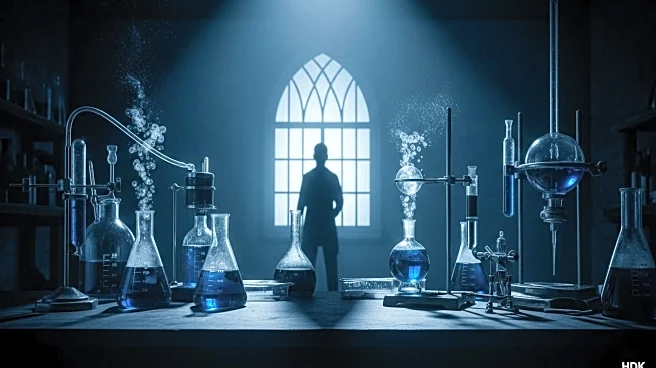What's Happening?
Guillermo del Toro's adaptation of Frankenstein has premiered at the Venice Film Festival, marking a significant milestone for the director. The film, funded by Netflix, features Oscar Isaac as Victor Frankenstein and Jacob Elordi as the creature. Del Toro's version is split into three parts, exploring both Frankenstein's motivations and the creature's experiences. The film emphasizes real sets over CGI, aiming to evoke sympathy for the creature. Critics have given mixed reviews, with some praising its beauty and artistry, while others find it lacking in substance.
Why It's Important?
Del Toro's adaptation of Frankenstein is significant for its ambitious storytelling and focus on humanizing the creature, a theme consistent with his previous works. The film's debut at a major festival like Venice highlights its potential impact on the film industry, particularly in terms of awards consideration. By using real sets, del Toro challenges the prevalent reliance on CGI, potentially influencing future filmmaking practices. The film's reception could affect Netflix's strategy in producing high-budget, artistic films.
What's Next?
Following its debut, the film will likely be released to wider audiences, potentially sparking discussions on its themes and execution. The reception at Venice may influence its performance during awards season, with critics' reviews playing a crucial role. Del Toro's approach to storytelling and set design might inspire other filmmakers to reconsider the balance between CGI and practical effects. The film's success could encourage Netflix to invest in more ambitious projects.
Beyond the Headlines
Del Toro's focus on humanizing monsters reflects broader cultural themes of empathy and understanding. This adaptation of Frankenstein may contribute to ongoing discussions about the portrayal of 'the other' in media. The film's emphasis on real sets over CGI could lead to a reevaluation of digital effects in cinema, promoting a return to traditional filmmaking techniques. Del Toro's work continues to challenge perceptions of genre films, blending horror with deep emotional narratives.











